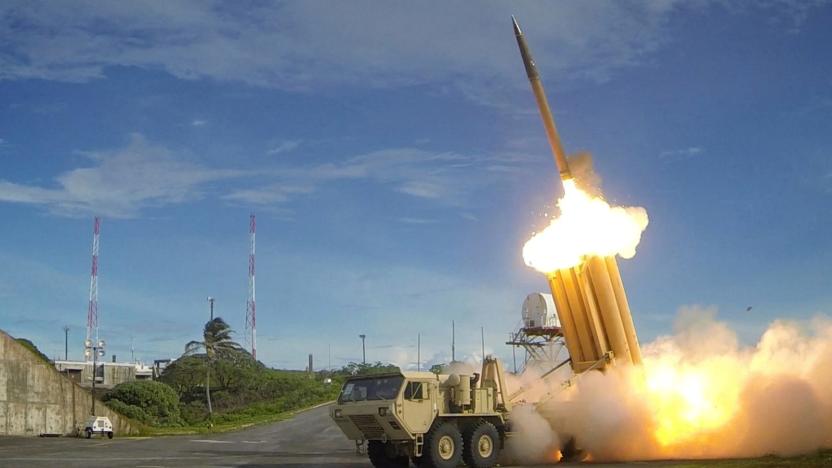missiledefense
Latest

China bans new South Korean games over a political crisis
China is rather irate that South Korea is starting to install the US' THAAD (Terminal High Altitude Area Defense) missile defense system to protect against North Korean threats. To that end, it's punishing the South with retaliatory policies... including one that targets video games. Chinese officials have frozen new licenses for games made in South Korea, preventing any more titles from launching in the country.

Runaway blimp prompts the US to freeze a missile defense program
That US Army radar blimp that ran amok didn't just trigger an internet frenzy... it may have put the brakes on a big military research initiative. Pentagon officials have frozen the JLENS (Joint Land Attack Cruise Missile Defense Elevated Netted Sensor System) program behind the blimp while they investigate what went wrong. The government isn't saying what it might do, but there are already politicians calling for the blimps to be cut. JLENS had already been hanging by a thread ever since 2010, when the Army threatened to kill it -- there are longstanding concerns about both the technology's reliability and its effectiveness compared to conventional aircraft. Don't be surprised if these defensive dirigibles vanish in short order. [Image credit: U.S. Air Force/Tiffany DeNault via Getty Images]

First piece of SBIRS missile defense system launched, not shot down
No need to worry about that loud, fiery exploding noise in Florida last week -- that was the sound of us all becoming a little bit safer. An Atlas 5 rocket lifted off from Cape Canaveral on Saturday, carrying Lockheed Martin's Space-Based Infrared Systems (SBIRS) Geo-1. The spacecraft will be followed by three more satellites launched in the next five years, all totaling $17.6 billion. Ominously referred to as "persistent overhead surveillance," the $1.3 billion first piece of the SBIRS constellation missile defense system is set to replace the antiquated Defense Support Program launched in 1970. It's a small price to pay to keep those darn space invaders out of our hair.

US satellites successfully track ballistic missile from cradle to grave, don't pay for the flowers
Lasers destroy missiles, missiles shoot down satellites, and soon, satellites may tell both where to aim, as the United States successfully managed to track an entire ballistic missile launch from "birth-to-death" with its prototype Space Tracking and Surveillance System. After a year and a half in orbit, two Northrop Grumman-built satellites managed the feat last week, in what the company's calling "the Holy Grail for missile defense." While we're not reading about any plans to mount any lasers on the satellite's... ahem... heads, Space News reports that the US Navy will attempt to relay the satellite tracking data to its Aegis ships with interceptor missiles on board, and hopefully obliterate incoming projectiles with the extra range and reaction time that satellite coordinates afford. The Navy has reportedly scheduled its first game of space-based Missile Command for next month.

